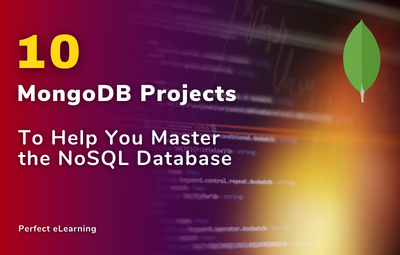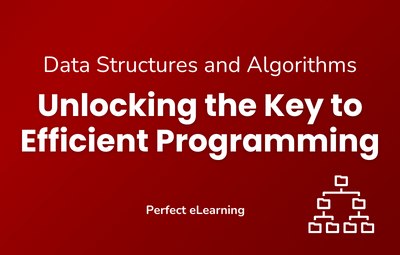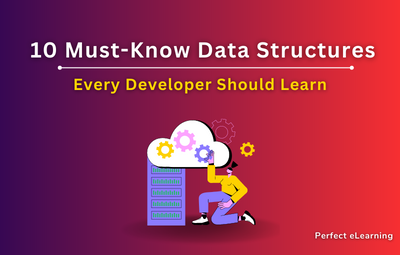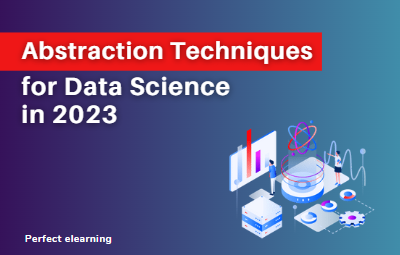

Discover the power of Data Structures and Algorithms, the ultimate guide to optimizing your code for maximum efficiency and performance.
data efficiently. On the other hand, algorithms are step-by-step procedures or instructions for solving a specific problem. They define the logic and flow of operations required to manipulate and process data effectively.
1. Importance of Data Structures and Algorithms in Programming
Efficient programming is essential in today's technology-driven world, where performance and speed are crucial. Data structures and algorithms allow programmers to optimize their code, making it faster and more resource-efficient. They provide strategies for storing and accessing data in a way that minimizes time complexity and maximizes efficiency.
2. Common Data Structures
Arrays
Arrays are a fundamental data structure that stores elements of the same type in contiguous memory locations. They offer constant-time access to elements based on their index but have a fixed size.
Linked Lists
Linked lists consist of nodes that contain data and references to the next node in the sequence. They provide dynamic memory allocation and efficient insertion and deletion operations but have slower access times compared to arrays.
Stacks
Stacks follow the Last-In-First-Out (LIFO) principle, allowing elements to be added or removed only from one end. They are commonly used in function calls, expression evaluation, and backtracking algorithms.
Queues
Queues adhere to the First-In-First-Out (FIFO) principle. Elements are added to the rear and removed from the front. They are widely used in simulations, scheduling, and breadth-first search algorithms.
Trees
Trees are hierarchical data structures with nodes connected by edges. They provide efficient searching, insertion, and deletion operations. Common tree types include binary trees, AVL trees, and red-black trees.
Graphs
Graphs consist of vertices and edges that connect them. They are used to represent relationships between objects and are fundamental in solving problems like shortest path algorithms and network flow analysis.
Hash Tables
Hash tables use a hash function to map keys to values. They offer constant-time average case operations for insertion, deletion, and retrieval, making them useful in scenarios that require fast data access.
3. Basic Algorithms
Searching Algorithms
Searching algorithms aim to locate a specific element within a collection of data. Common algorithms include linear search, binary search, and hash-based searching.
Sorting Algorithms
Sorting algorithms arrange elements in a specific order. Some popular sorting algorithms are bubble sort, insertion sort, merge sort, and quicksort.
Recursion
Recursion is a technique where a function calls itself to solve a problem by breaking it down into smaller subproblems. It is widely used in algorithms like factorial computation and tree traversal.
Dynamic Programming
Dynamic programming involves breaking down a complex problem into simpler overlapping subproblems and solving each subproblem only once. It optimizes computational efficiency by storing previously computed results.
4. Advanced Data Structures and Algorithms
Heaps
Heaps are binary trees that satisfy the heap property. They are often used in priority queues and efficient sorting algorithms like heapsort.
AVL Trees
AVL trees are self-balancing binary search trees that maintain height balance. They guarantee logarithmic time complexity for search, insertion, and deletion operations.
Red-Black Trees
Red-Black trees are another type of self-balancing binary search trees. They ensure balanced tree height and provide efficient operations for maintaining order and retrieving data.
Hashing Techniques
Hashing techniques employ hash functions to map data to fixed-size values. They offer fast retrieval, insertion, and deletion operations and are widely used in data storage and retrieval systems.
Graph Traversal Algorithms
Graph traversal algorithms, such as breadth-first search and depth-first search, explore and visit all the vertices in a graph. They are essential for solving graph-related problems and analyzing network structures.
5. Optimizing Code Efficiency
Efficiency is a critical aspect of programming. By understanding data structures and algorithms, programmers can optimize their code for faster execution and reduced resource consumption. This includes selecting appropriate data structures, choosing efficient algorithms, and avoiding unnecessary computations.
6. Real-World Applications
Data structures and algorithms find applications in various domains, including:
Web development: Efficient data structures and algorithms enable faster page rendering and processing of user requests.
Database management: Data structures are crucial for indexing, searching, and organizing large volumes of data.
Artificial intelligence: Algorithms drive machine learning models and optimization techniques.
Networking: Graph algorithms help analyze network topologies and optimize routing.
Conclusion
Data structures and algorithms are the keys to efficient programming. They provide the tools and techniques necessary to organize and process data effectively, leading to optimized software solutions. By mastering these fundamental concepts, programmers can create faster, more reliable, and scalable applications.
FAQs (Frequently Asked Questions)
Q1. What are the benefits of using data structures and algorithms in programming?
A1: Data structures and algorithms optimize code efficiency, enable faster execution, and reduce resource consumption.
Q2. Are data structures and algorithms only applicable to specific programming languages?
A2: No, data structures and algorithms are independent of programming languages and can be applied universally.
Q3. Can I become a proficient programmer without understanding data structures and algorithms?
A3: Understanding data structures and algorithms is essential for becoming a proficient programmer and solving complex problems efficiently.
Q4. How can I improve my understanding of data structures and algorithms?
A4: Practice implementing different data structures and algorithms, solve coding problems, and study from reputable resources and textbooks.
Q5. Are there any online courses or tutorials available for learning data structures and algorithms?
A5: Yes, there are many online platforms that offer courses and tutorials specifically focused on data structures and algorithms, such as Coursera, edX, and Udemy.
Perfect eLearning is a tech-enabled education platform that provides IT courses with 100% Internship and Placement support. Perfect eLearning provides both Online classes and Offline classes only in Faridabad.
It provides a wide range of courses in areas such as Artificial Intelligence, Cloud Computing, Data Science, Digital Marketing, Full Stack Web Development, Block Chain, Data Analytics, and Mobile Application Development. Perfect eLearning, with its cutting-edge technology and expert instructors from Adobe, Microsoft, PWC, Google, Amazon, Flipkart, Nestle and Info edge is the perfect place to start your IT education.
Perfect eLearning provides the training and support you need to succeed in today's fast-paced and constantly evolving tech industry, whether you're just starting out or looking to expand your skill set.
There's something here for everyone. Perfect eLearning provides the best online courses as well as complete internship and placement assistance.
Keep Learning, Keep Growing.
If you are confused and need Guidance over choosing the right programming language or right career in the tech industry, you can schedule a free counselling session with Perfect eLearning experts.


